
All categories
Featured selections
Trade Assurance
Buyer Central
Help Center
Get the app
Become a supplier

(805 products available)


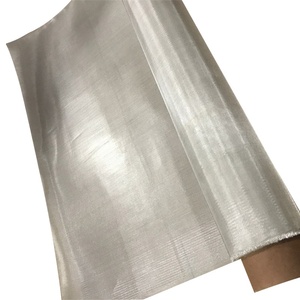






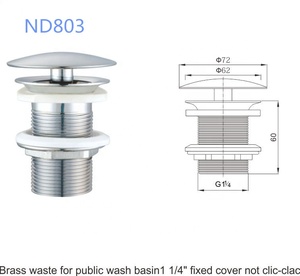









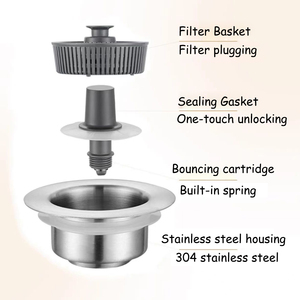

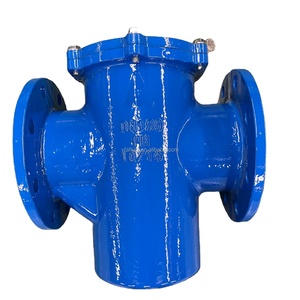




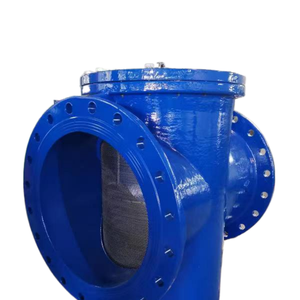






A duplex strainer is a common and necessary device for filtering fluid and separating foreign objects from fluid systems. It consists of two bowls, where one cleans the strainer while the other one is in use. This twin configuration guarantees non-stop operation. There are several types of duplex strainers based on the material and application. They include the following:
Stainless steel duplex strainers are strong, long-lasting, and rustproof. They are ideal for high heat, pressure, or corectibility. They are often found in important industries where resistant debris and flow filtration are necessary. They deal with stainless steel duplex strainers that require sustained use with less maintenance.
Strainers, like the cast iron duplex strainer, are often employed in situations where budget and basic functionality are primary interests. They are well-suited for low to medium fluid systems. The brake should be pulled because cast iron is prone to rust if not properly treated.
Brass duplex strainers are mostly used in the water supply and HVAC systems. Brass is corrosion-resistant and lighter than cast iron. Duplex brass strainers are suitable for light and water-based applications.
For their light weight and corrosion resistance, plastic duplex strainers are preferred. They are ideal for systems with chemical exposure or where metal strainer corrosion would have been a problem. They are also cost-effective solutions for low-pressure systems.
Cast steel duplex strainers can be used for high-pressure and high-temperature situations because they are more robust than simple cast iron strainers. They provide both the reliability of metal construction and the benefits of duplex design. They can also be tailored for special industrial needs.
Duplex strainers play an important role in different industries. They help primary filter unwanted objects from fluids to protect equipment and ensure smooth operations. Below are the industrial applications:
Strainers help remove debris and sediment from incoming water sources in wastewater and drinking water treatment plants. Removing these contaminants helps protect important machinery like pumps, valves, and pipes. Duplex strainers are important because they allow one strainer to be cleaned while the other is in use, reducing downtime.
Strainers filter sediments, rust, and other impurities from oils and gases before refinery processes or equipment use. This filtration helps protect expensive equipment like pipelines and compressors from damage caused by debris. Duplex strainers' continuous operation feature is particularly important in the oil and gas sector because most processes require high flow rates.
Strainers are commonly used in chemical plants to filter raw materials and chemicals. Debris removal ensures the purity of chemicals and protects sensitive equipment from damage. Many chemicals are aggressive and can corrode or damage equipment, making filtration critical. Duplex strainers allow continuous operation and minimal downtime in this highly dynamic environment.
In marine industries, duplex strainers are used in cooling water systems, bilge, and ballast water management systems. They help remove marine organisms, debris, and sediment to keep ships and equipment safe. The ability to clean one strainer while the other is in use is critical for maintaining ships in port and at sea.
Duplex strainers filter dirt, rust, and other debris from the water used in heating, ventilation, and air conditioning systems. This protects coils, pumps, and other components from clogging and damage. Duplex strainers are frequently found in large commercial and industrial HVAC systems that require reliable filtering.
In the pharmaceutical industry, strainers are used to filter liquids during manufacturing and before packaging. They ensure the purity and safety of drugs and protect sensitive equipment like pumps and homogenizers. Because quality control is so important, stainless steel duplex strainers are frequently used for easy cleaning and sterilization.
Duplex strainers are used to filter raw ingredients, water, and air in the food and beverage industry. They ensure product safety and quality by removing contaminants. Duplex strainers are also used since they are easily cleaned and provide uninterrupted operations, which are critical for meeting production demands.
Providing the correct duplex industrial strainer is not enough. Buyers need to offer various customization options to meet their clients' unique filtering needs. Customizing these strainers allows businesses to offer specific solutions based on industry requirements, flow rates, and fluid characteristics. Below are some of these customization options:
The choice of the right material is primarily dependent on the fluids being filtered and the operating conditions. A stainless steel duplex basket strainer should be recommended to clients in aggressive or high heat/pressure conditions. A cast iron duplex strainer is a cost-effective solution for clients who use low-pressure fluid systems. Plastic strainers should be recommended for clients in chemical-intensive environments. Brass duplex strainers are ideal for clients whose operations require high resistance to corrosion and are dealing with water or air. Cast steel duplex strainers are suitable for clients with high-pressure and high-temperature filtration requirements.
Strainer basket perforation sizes and shapes can be customized depending on the specific contaminants that need to be filtered out. Larger pores are suitable for filtering larger debris, while smaller ones are for finer contaminants. Custom strainer baskets can be made in different mesh sizes, wedge wire configurations, or perforated patterns to meet unique filtration requirements.
The choice of the right flange standard and connection type should be determined by the client's existing piping system. Custom duplex strainers are available in different flange sizes and standards. Options include ANSI, PN, or custom flanges. Buyers may also provide various connection types, including threaded, welded, or clamp connections. This ensures compatibility with clients' pipeline systems.
Many industries have specific requirements for surface finishes and coatings, especially where hygiene or anti-corrosion properties are concerned. Custom coatings like food-grade epoxy, PTFE (Teflon), and nickel plating are available. These coatings offer additional protection against corrosion, chemicals, and bacterial growth. Buyers can also select various surface finishes like polishing or rough texturing. It is helpful for clients in industries like pharmaceuticals and food processing that require specific surface conditions.
Strainer configurations may be customized to fit space constraints or the specific operational needs of different clients. The most common configurations include manual and automatic strainers, simple Y and duplex designs. Automatic duplex strainers with custom backwash mechanisms may be offered to clients requiring high levels of filtration and minimal downtime. One of these filtering systems' most important benefits is their automatic and easy cleaning feature, which helps reduce downtime.
In custom duplex strainers, the size can be adjusted to the specific flow rate requirements of the client's system. Buyers should provide strainers in a wide range of sizes to cater to clients with different flow rates. Custom strainers are available with different pressure ratings. These options ensure that the strainer can safely operate under the client's specific pressure and temperature conditions.
When selecting the right duplex strainers for clients, buyers should consider several factors. It will ensure that the products meet clients’ operational needs effectively. Below are these factors:
Water users' experience and expertise should be the first filtrate of the fluid to be filtered. Buyers should check the clients' fluid types since it will impact the material and design choice. For clients with highly corrosive or volatile fluids, a stainless steel duplex strainer is recommended. A cast iron duplex strainer is a cost-effective solution for clients using low-pressure fluids. Duplex brass strainers should be recommended for clients using water or air. Plastic duplex strainers are available for clients with limited budgets, especially those in chemical-intensive industries.
Consider the size and nature of the contaminants that need to be filtered. Depending on the application, a duplex oil strainer with a coarser or finer strainer basket will work. Buyers should first consult with the client's maintenance team, as they may have some special requirements or preferences for the strainer. The maintenance team’s input will help ensure the correct debris size is captured and the filter demand is met.
Flow rate is an important factor when selecting duplex strainers. An ideal choice should have sufficient flow capacity to handle the client’s system demands without causing pressure drops. A customized strainer can be provided to meet clients with higher or lower flow rates.
Clients require lower maintenance options since they have a high demand for uptime. Automatic strainers are suitable for these clients. They self-clean without interrupting flow. Manual strainers may be provided to clients who have less frequent filtration needs. Consider ease of access for cleaning and replacement when selecting the right strainer. Will the whole system have to be dismantled, or will there be access to the strainer without disrupting other components?
Buyers should consider the installation requirements of the strainer. Will there be any special configurations that will need to be applied? Should installation go vertically or horizontally? Selecting horizontal duplex strainers is advisable for clients with limited space during installation. Vertical strainers can be offered to clients with ample space. They have the added benefits of flexibility during the installation process.
Clients in regulated industries like oil and gas and food and beverages require strainers that meet specific industry standards. These standards could be quality assurance, safety, or hygiene. Buyers should also consider the manufacturers' certifications and compliance with international standards. These factors will ensure the client is operating legally and within safety limits.
A1. It filters out contaminants, safeguarding critical components like pumps and valves from damage. Its unique dual-chamber design allows one side to be cleaned while the other is in operation, ensuring uninterrupted fluid flow. This constant defense against debris not only enhances system performance but also significantly extends the longevity of vital equipment.
A2. Buyers should consider the client’s fluid and application types, flow rates, and pressure conditions. For high-pressure fluids, a cast steel duplex strainer is a suitable option. For those at low pressure, consider the cast iron duplex strainer. If the client is using chemicals, go for a stainless steel or plastic duplex strainer. Buyers should also consider basket perforation size, installation space, and maintenance requirements. These factors ensure that the chosen duplex strainer meets operational needs and efficiency requirements.
A3. Duplex strainers are commonly constructed using cast iron, stainless steel, brass, and carbon steel. Plastic may be used as a cost-effective or lightweight alternative in lower-pressure scenarios. Each material is chosen strategically: stainless steel for superior corrosion resistance, brass for its anti-corrosive properties, and cast and carbon steel for strength and affordability.
A4. Duplex strainers offer continuous operation by allowing one chamber to be cleaned while the other is in use. They boost system uptime and efficiency. They are also customizable to fit specific client needs like material, flow rate, and debris type. Continuous operation helps lower maintenance costs, making them economically advantageous for high-demand industries.